DMM LAOA LA814103
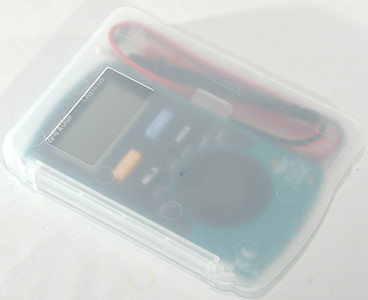
This is a small pocket DMM with voltage, ohms, capacitance, frequency and current, i.e. basically all common multimeter functions.
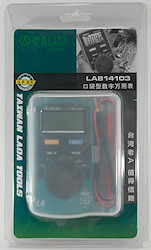

The meter was in a clamshell pack. On the back is a list of the main specifications.
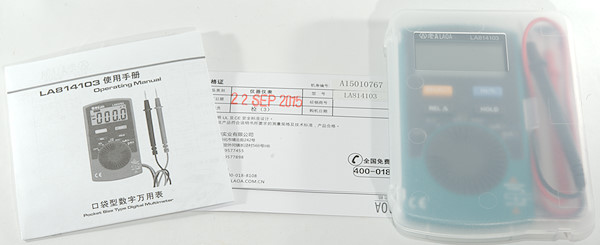
In the box was the meter and a manual in Chinese.

Probes has same CAT rating as meter: CAT II 600V
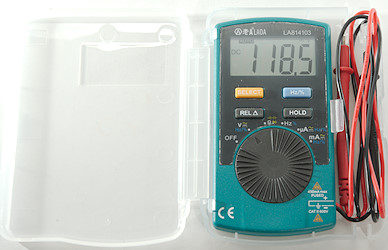
The range switch is easy to turn, the meter will not slide around. The detents on the range switch are a bit weak, i.e. it is possible to place the range switch between two ranges.
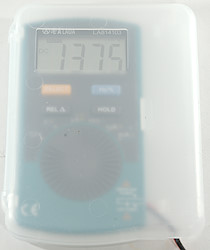
It is possible to use the meter when it is inside the box, making it a bit splash proof.
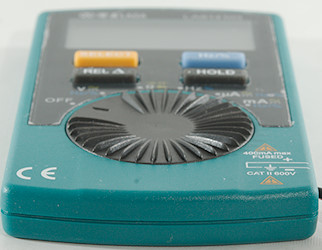
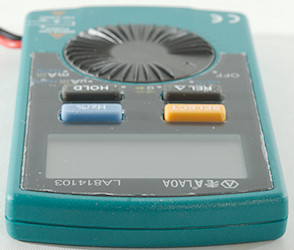


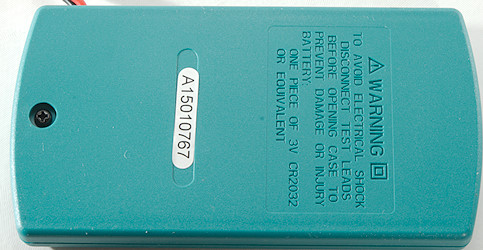
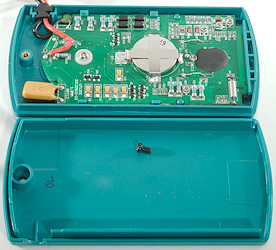

Display
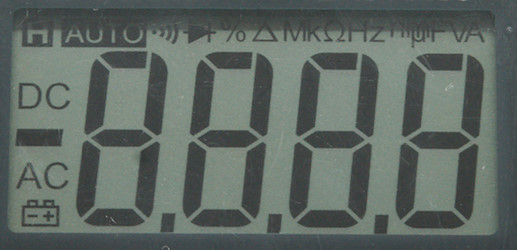
The above picture shows all the segments on the display.
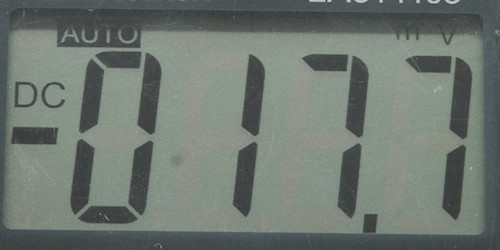
Typical display during usage, it will show the selected range and value.
Functions
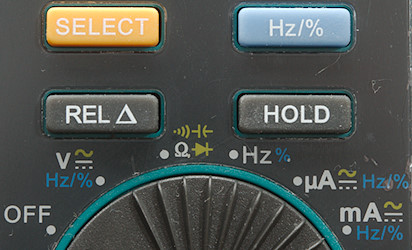
Buttons:
- Select: Select AC in volt and current ranges and between ohm, diode, continuity and capacitance
- Hz/duty: Will select between voltage, frequency and duty cycle in both DC, AC and Hz ranges.
- Rel: Store current display value and show all new values relative to this value.
- Hold: Will freeze the display reading, until pressed again.
Selection of Rel and Hz/duty will disable auto ranging and it stays disabled
Rotary switch:
- Off: Meter is turned off
- V: DC/AC voltage and frequency/duty cycle.
- ohm: Ohm, diode continuity and capacitance.
- Hz: Logical frequency input.
- uA: Micro ampere both AC and DC and frequency/duty cycle
- mA: Milli ampere both AC and DC and frequency/duty cycle
Input

This meter only have a red and black probe coming out, no other connections.
Measurements
- Volt and frequency
- At 1V rms input on Hz the frequency counter range is from 0.6Hz to 530kHz
- Duty cycle works from 5% to 92% at 10kHz with 4Vpp, precision is within 2.8
- Frequency counter input need a zero crossing.
- 1V AC readings is 5% down at 1.8kHz
- Input impedance is 10-11Mohm in VDC/VAC, except mVDC that is high impedance at low voltages.
- Hz input is 1-4Mohm up to 12V where it drops to 2kOhm
- Input protection is 600V AC/DC.
- Current
- The mA and uA ranges are protected by a PTC
- Ohm, continuity, diode and capacitance
- Ohm needs about 3.5s to measure 100ohm
- Ohm is 0.42V open and 0.21mA shorted
- Continuity is moderate (100ms) (It is faster, but then it will miss sometimes).
- Continuity beeps when resistance is below 50ohm (Sound is best below 30ohm)
- Continuity is 0.44V open and 0.21mA shorted
- Diode range uses 1.5V, max. display is 0.999V at 0.21mA, max. current is 0.65mA shorted
- 10uF takes about 3.4 seconds to measure.
- 90uF takes about 12 seconds to measure.
- Rated overload protection is 600VAC
- Miscellaneous
- Current consumption of meter is 0.8mA, except in AC and current where it is 1.3mA.
- Meter fails below 1.4V, battery symbol show at 2.3V.
- Readings will drift about 20 count from when battery symbols shows to the meter fails.
- Viewing angle is good
- Display updates around 3 times/sec
- Will automatic turn power off after about 35 minutes
- The meter often need many display update to reach the final value.
- Weight is 79.1g (119g in box) without accessories, but with battery.
- Size is 110 x 58.2 x 14mm (probes not included) and 120.5 x 90 x 18.5mm in box.
- Probes
- Probe wire is a bit thin, the are 47cm long.

capacitance measurement waveform for 1uF capacitor

Frequency input resistance in frequency position.
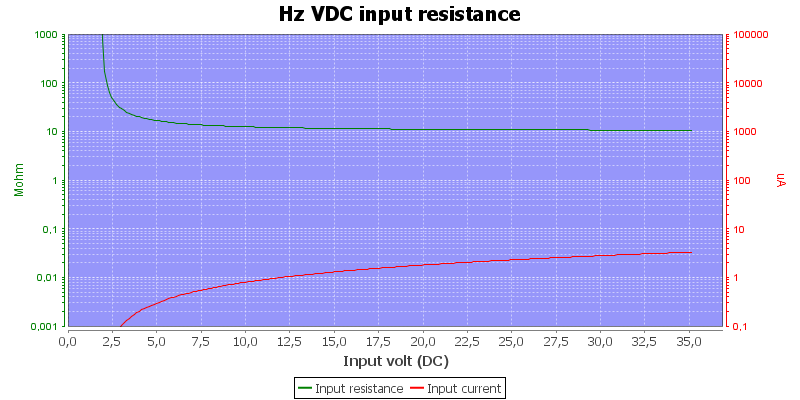
Frequency input resistance in Hz position.

The meter is supposed to have a 4nF range, but I could not check it because the offset is 10nF. capacitance is easy within tolerances when using REL function.
Tear down
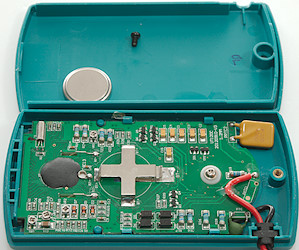
I had to remove one screws, to open it, this is also required when replacing battery.
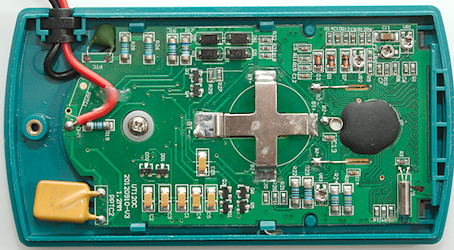
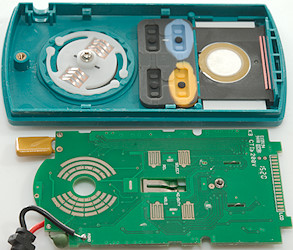
The circuit board was mounted with four clips, it was not necessary to remove any screws.
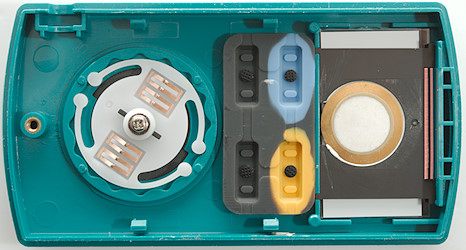
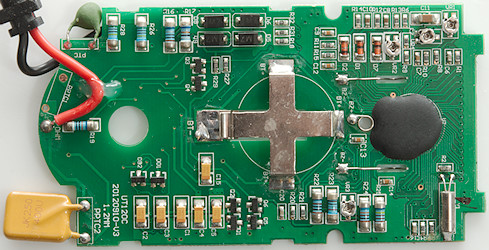
This meter requires a lot of adjustment from the factory (VR1..VR4: Trimpots). On the input side we have a PTC for protection in ohm and frequency ranges, the ohm sense input (R19: 900kOhm), the 10Mohm input (R26 & R28: 2x5Mohm). There is also 3 protection transistor pairs (Q1 & Q2, Q3 & Q4, Q5 & Q6). R19 uses Q3 & Q4 as protection. PTC uses Q5 & Q6 in ohms and Q1 & Q2 in frequency.
Current shunts (R16: 1ohm, R17: 99Ohm) are protected by diodes (D5, D6, D8, D9) and the large PTC (PPTC2).
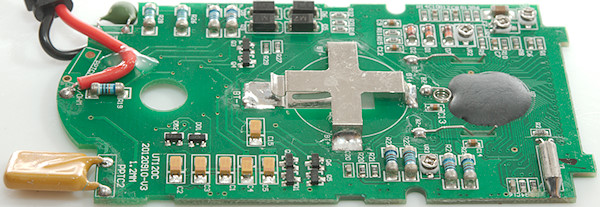
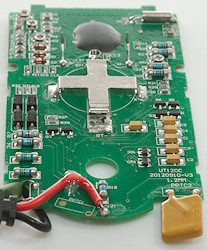
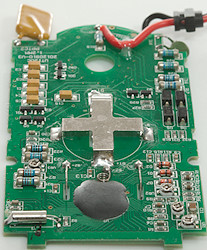
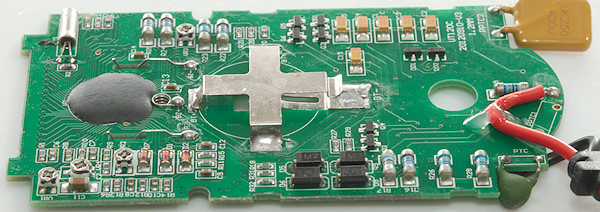

This side is without parts, but some stuff on the other side needs holes in the circuit board. This includes the springs for connecting the buzzer.
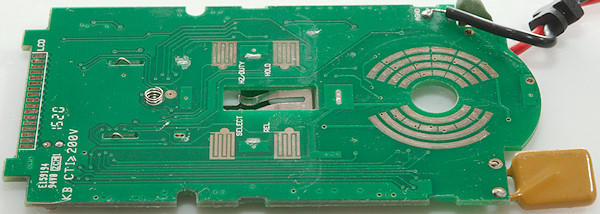
Conclusion
The meter says CAT II 600V, if the range switch can handle 4000V without arching it may be correct.
The meter is well equipped with ranges for a pocket meter and can match many larger meters, precision is fairly good (Except low capacitance range), safety looks decent for occasionally mains work at home.
Notes
This meter looks identical to the UNI-T UT120C (The circuit board is also marked with UT120C)
How do I review a DMM
More DMM reviews
































